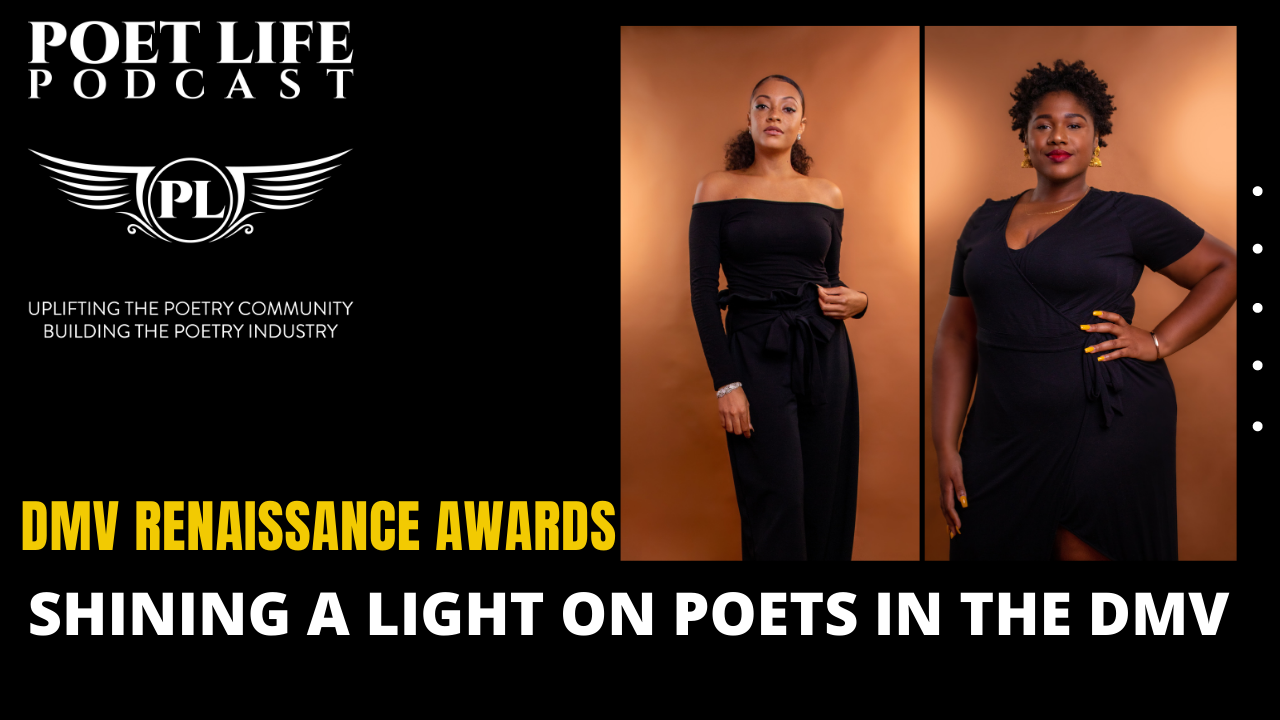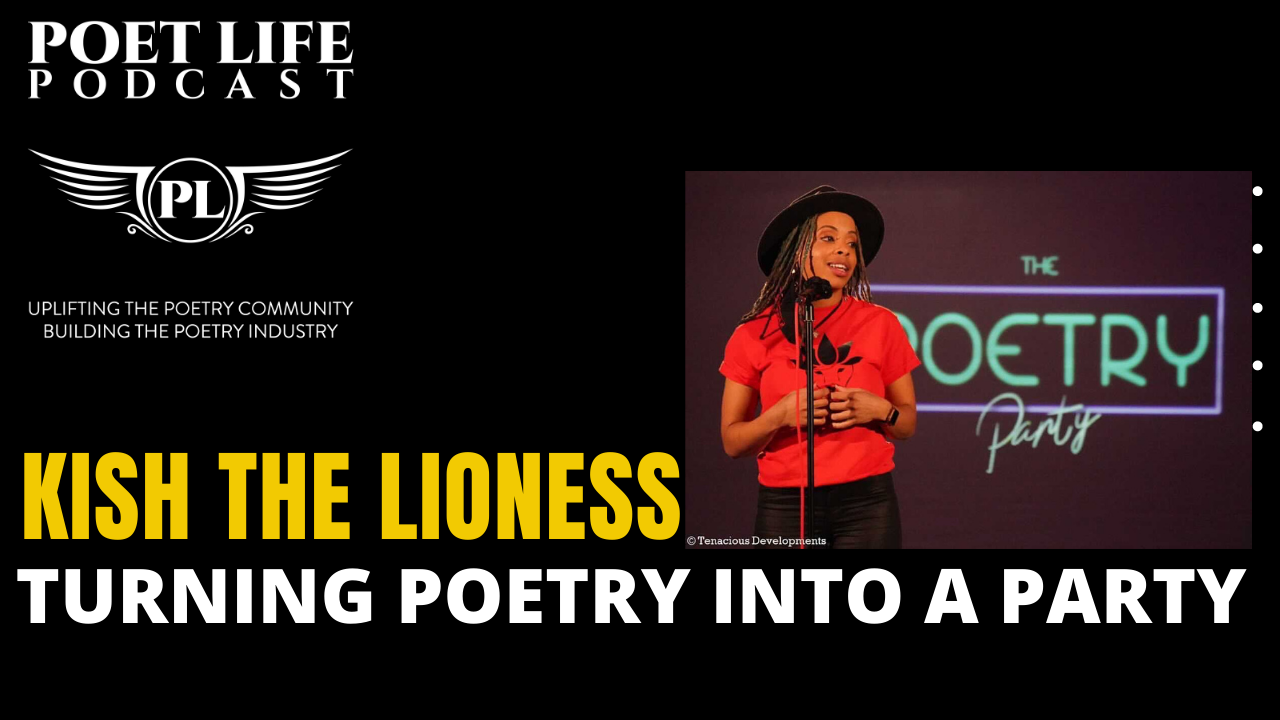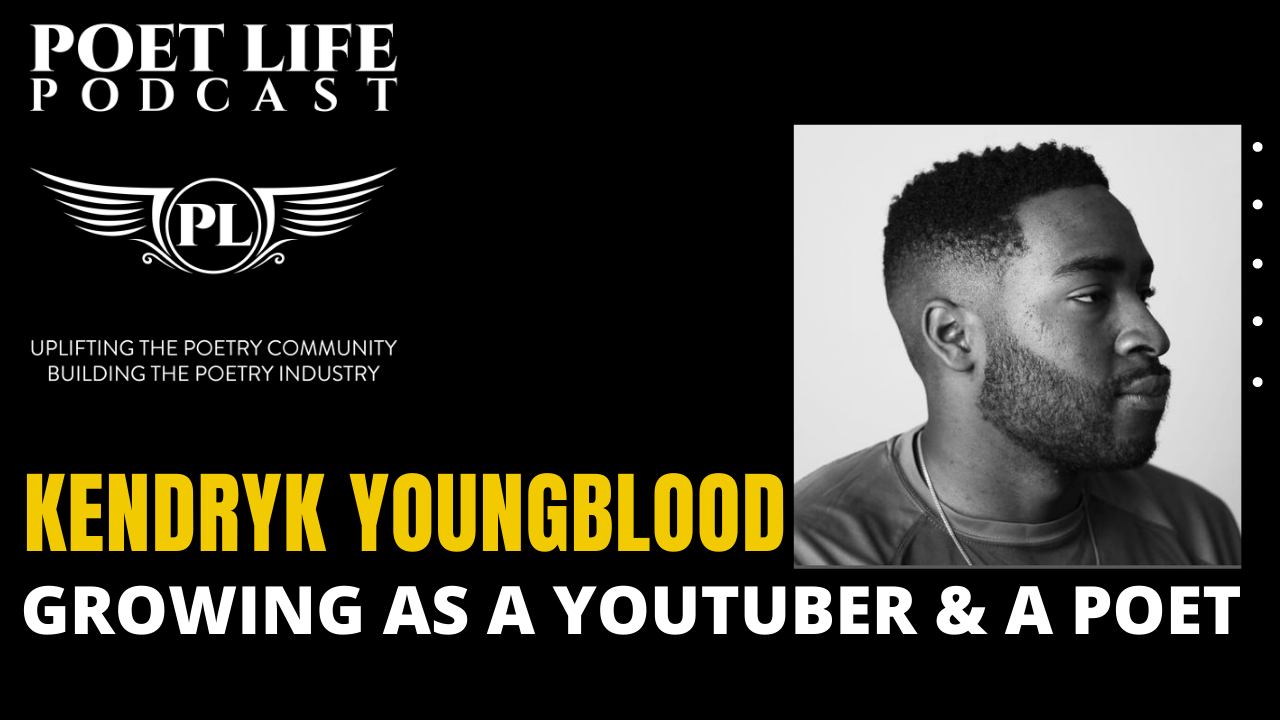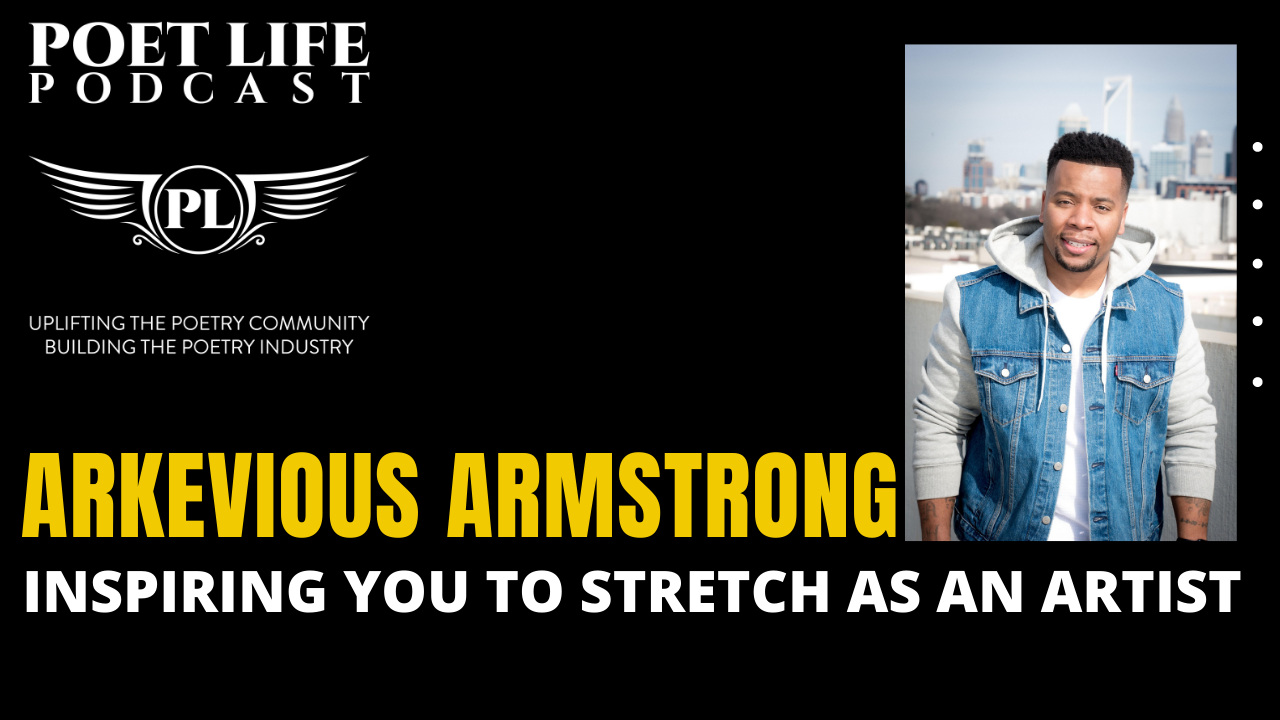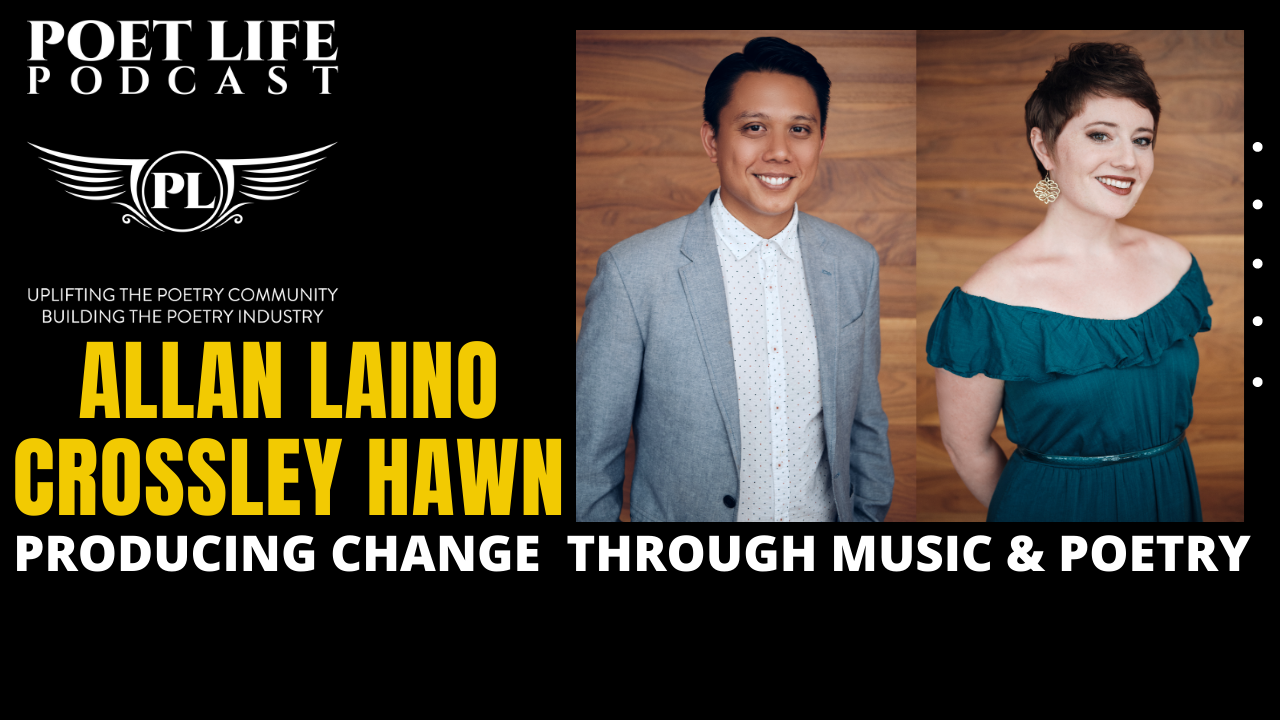Shining a Light on Poets with DMV Renaissance Awards
The movies have the Oscars. Music has the Grammys. Poetry? We now have the DMV Renaissance Awards. This platform, created by Crystal Lyn and GradaLove, celebrates the local culture contributors and places the DMV community’s artists in the spotlight.
The movies have the Oscars. Music has the Grammys. Poetry? We now have the DMV Renaissance Awards.
This platform, created by Crystal Lyn and GradaLove, celebrates the local culture contributors and places the DMV community’s artists in the spotlight.
Summer 2021 will be the first annual awards show. While 2020 was gearing up to be the first annual show — the venue was set, marketing meetings in motion, contracts signed, decor planned — COVID-19 became the blessing in disguise Crystal and GradaLove needed.
With the quality over quantity mindset, DMV Renaissance Awards shifted to Instagram in 2020 and began a virtual open mic. They started at zero followers and organically grew to 600 by April 2021.
There’s something to say about organic growth.
With no paid promotions, they say “a lot of [their] people aren’t from the DMV, which made [their international] audience happen sooner than expected.”
What does a poetry awards show look like?
Unlike the Oscars or Grammys, the DMV Renaissance Awards are selected by the people. Nominations opened in April 2021, and it’s based purely on nominations.
The poets with the most nominations will win the category. Simple as that!
What are the categories, you ask? For this first year, there are 11 categories:
Best female poet
Best male poet
DMV’s favorite host
Female Poet OG of the year
Male Poet OG of the year
DMV’s favorite author
Most entertaining poet
Poet emcee of the year
DMV’s favorite erotic poet
DMV’s favorite Slam Poetry Champion
Haikuist of the year
Keep tuned into the DMV Renaissance Awards to learn who the winners of the 2021 awards are!
But what does it take to put this on?
10 things to know about creating a poetry awards show
There’s a lot that goes into the DMV Renaissance Awards, and we could write a book on it. But we’ll give you the digestible version:
Remember your “why.”
It’s a community effort.
Admit to yourself that you don’t always know what you’re doing.
Reach out to people to learn from them.
There are always sacrifices.
It’s going to take money for things like monthly bills and resources.
If you think you’ll make quick money, you’re going to be disappointed.
It takes humility to do something in service.
You’re not always going to get back your money or your time, but you will see the fruits of your labor.
It takes all the things you’ve heard from everyone else too: consistency, having a website, posting on social media, etc.
Great! You’ve got these things down and can get started. But you may now be wondering: What more can a poetry awards show do?
Plenty!
For Crystal and GradaLove, they see a tour of the DMV Renaissance Awards with the winners. They see a bigger audience for DMV poets. They see an international platform.
There’s a lot of room for growth and opportunity for an awards show, if you can picture it.
Think creatively, and you might just provide quite the platform for your own local poets who deserve the visibility.
We’ll leave you with this final thought from GradaLove:
“It’s a lot of work, and sometimes you feel like you’re at a scarcity of resources. But I want everyone to know you have all you need, so just be. Show up as yourself authentically and make it happen the way you want to. That’s all you need.”
Be sure to watch or listen to the full episode for even more detail behind the DMV Renaissance Awards, Crystal Lyn, and GradaLove!
The DMV Renaissance Awards was created by poets in the D.C. metropolitan area, also known as the DMV area, in February 2020 to celebrate local poets. Due to the global pandemic, we postponed the inaugural awards show to the summer of 2021. We have since cultivated a national community of poets, thanks to Instagram, by hosting monthly virtual open mic nights. Through the DMV Renaissance Awards, we aim to celebrate our local culture contributors and place our community’s artists in the spotlight. During the summer of 2021, the DMV’s selected artists will be awarded for their talents and contributions at our first annual DMV Renaissance Awards Show.
Turning Poetry Into A Party
Long-term Baltimore host, Kish the Lioness, has turned poetry into a party, and it’s a weekly vibe. From poets and comedians to singers and even martial artists, this open-mic style party happens every Wednesday in Baltimore. It’s much more than an open mic.
Long-term Baltimore host, Kish the Lioness, has turned poetry into a party, and it’s a weekly vibe. From poets and comedians to singers and even martial artists, this open-mic style party happens every Wednesday in Baltimore. It’s more than an open mic. It’s a:
Performance and development program
Team of passionate artists
Full-on process
This collective of different kinds of art is streamed and recorded so the artists have professional footage of their performances. They even partnered with a professional production team to film the entire show, which you can stream on YouTube.
So what does this weekly poetry party look like?
Developing the poet
If you’re looking for a place to polish up your skills as a professional poet, Poetry Party is there. They want to be the support system for growth and the platform for gigs and opportunities.
Poetry Party offers internships to artists who attend Poetry Party. One season of Poetry Party is six months, and over that time, those in the program learn whatever it is they want to learn about. Some people might want to explore what it’s like to be a host, photographer, videographer, audio engineer, or what have you. And Poetry Party has those roles to teach others.
Kish the Lioness says the start with the question, “What’s the thing keeping you from the next step?” and then work on that for the next six months.
She says:
“We want to help artists manage their processes. Our development will come from finding out what it is that you lack and the opportunities that you need and then fine tune and polish.”
At the end of six months, they can decide if they want to stay put, try something else, or if they’ve learned what they wanted to learn and be done.
One crucial thing to remember to grow as an artist?
Be okay with not being picked.
Kish says, “So many people give up when they don’t get picked. It’s staying consistent through that and being able to understand and see your own value and just push.”
Forming the team
Sometimes, you don’t go find the team. The team finds you.
Kish explains, “I never asked for a team, and I never hired. The team kind of assembled, gratefully. It’s been a year that I’ve worked with the team and alongside these artists. It’s a constant flow of new ideas, checks and balances so we can polish each other. We stay sharp and are always providing something new for people.”
Once the team forms, you’ve got to be open up to others helping shape your passion project. The team cares as much as you do and has a variety of perspectives and ideas to bring to the table.
Kish says she allows herself to receive ideas, opinions, surveys, etc.
As any good leader does, she gives credit where credit is due. Here are a few ideas her team has shared or implemented:
Surveys: A customer can do a survey on their phone in an app.
Mobile sign-up list: They have an app for people to sign up for open mic that gives them the time and an alert to know when it’s almost time.
Theme nights: They had fire pit night where people brought their most fire pieces
A Poetry Party logo, face masks, and website
She says, “We’re making sure everyone has the things they need so we can grow and build. We’re starting with ourselves so when we’re helping other people, we can be the example.”
Poet Life Podcast Host Christoph Jenkins made a powerful point:
“So many people give examples without becoming the example.”
And that’s exactly what Kish the Lioness and her team at Poetry Party are doing. They’re setting the example.
Improving the process towards the endgame
The Poetry Party is about a two to three day process each week.
Wednesdays is where the magic happens.
Thursdays are a recap where they set goals (one individually per person and one collectively as a team), watch the footage, and pick the artists they want to keep on the show and put through the development program.
Thursdays also involve family dinner at one of the teammate’s homes. What’s a poetry community without poetry fam time, right?
Monday afternoons include a meeting to follow up on the action items from Thursday’s goal setting, as well as time to prepare for Wednesday’s show. Everybody has their roles in making the show happen.
So where is all of this effort leading?
Kish says, “The end game is international. My goal is to be on Netflix or a Netflix equivalent to provide this platform on an international basis for local artists to be seen around the world. Because we’re good enough. And I think poetry is due for this. The poetry industry is due for this.”
The moral of the story? Other than how awesome Poetry Party is and that you need to check it out?
Be the example. Know your team may form in ways you aren’t expecting and will take your vision to a whole new level. And develop the people you’re working with to let them shine. Because when they shine, you shine, and your passion project shines.
Watch the full episode to get even more insight from Kish the Lioness on Poetry Party and more!
Kish the Lioness is a Baltimore-based creator, emphasizing in curating platforms that empower HEALing and couRAGE to vulnerable woman and girls. She uses motivational art and networking to bridge gaps between those who have it and those who need it. Learn all about Kish the Lioness at poetryandlocs.com/kishthelioness
8 Things to Know to Grow As A YouTuber and A Poet
Growing a YouTube channel is no small feat. Sure, you can have one video go viral and gain a lot of followers from that. But if you’re not prepared to maintain your channel and retain the audience, that following will go away. So how do you do this and do it right?
We talked with Kendryk Youngblood, from the YouTube channel “Youngblood Poetry,” to learn how he’s doing it.
Growing a YouTube channel is no small feat. Sure, you can have one video go viral and gain a lot of followers from that. But if you’re not prepared to maintain your channel and retain the audience, that following will go away.
So how do you do this and do it right?
We talked with Kendryk Youngblood, from the YouTube channel “Youngblood Poetry,” to learn how he’s doing it.
As of January 2021, Kendryk had 200 subscribers and was giving it his all. Then his videos hit the sweet spot and as of April 2021, he’s almost at 7,000 subscribers and retaining that audience.
How?
Here are the 8 things you should know to help yourself grow as a YouTuber and a poet.
Find your niche content and get comfortable
Parse through the comments for constructive feedback
Know the copyright laws and YouTube guidelines
Learn the rules for monetization
Do your best with what you have
Put in the time to create quality content
Understand what works for your channel
Don’t forget about Search Engine Optimization (SEO)
Let’s dive a bit deeper into these tips and see how Kendryk applies this knowledge and how you can too.
1. Find your niche content and get comfortable
One of Kendryk’s main goals is to make poetry as mainstream as the music industry or movies.
“At the end of the day, if I can get people who are into music, rap, or movies to start seeing the value and contributions of poetry, then I’ve done my job.”
But “poetry” is too broad of a topic for a channel. You still have to be known for something.
Kendryk started doing tutorial videos on things like how to improve your rhymes or how to take criticism, and he really enjoyed reaction channels. Then he learned, no one seems to be known for poetry reaction videos.
You know what he did?
He says, “I started looking at how some of the best ones were doing it, where they put the video they were reacting to in their video, how they position their chair, what the lighting would be like, how often they pause it — because you don’t want to ruin the flow.”
Another thing he learned to do to best fit this type of niche content was getting comfortable with it.
Kendryk says, “I did my best to be comfortable in front of a camera. You can get comfortable, relax, stretch out, be yourself behind the camera and in front of the camera.”
Being yourself and being comfortable makes videos that much more entertaining to watch.
2. Parse through the comments for constructive feedback
It’s only natural that negative comments will come. It’s an unfortunate reality of the internet, so it’s best to prepare yourself to get those comments and to not let them affect you.
What you should do, though, is parse through those comments and find the ones that are actually helpful to growing your channel.
Kendryk’s experience has taught him just that.
“You can definitely tell the difference between constructive criticism and people just being mean. There are some people who are very genuine like, ‘Hey, you should try this…’ And getting feedback from my subscribers has done a great deal in growing my craft.”
Your loyal subscribers will tell you what you need to do to improve, even if it’s not explicitly spelled out. Pay attention to what they’re saying and adapt.
3. Know the copyright laws and YouTube guidelines
The last thing you want to have happen is a video of yours get flagged for copyright infringement. Be sure to pay attention to the copyright laws and YouTube guidelines.
Kendryk learned this as well:
“If I break things up into small enough clips and incorporate enough of my own original content, usually YouTube won’t flag it [for copyright]. And usually the original content creator won’t claim my content — which I wouldn’t want of course because that means they get all the revenue from my videos.”
“But I have experienced copyright claims before, and it was completely justifiable. I knew when I was making the video that I was using too much content. It wasn’t a copyright strike, but I was notified before I uploaded the video.”
4. Learn the rules for monetization
Along with learning the rules of YouTube, learn the rules of monetizing your YouTube channel if that’s the route you want to go.
According to Kendryk, “In order to get monetized, you need to have a thousand subscribers and to have made 4,000 hours of watch time within a 12-month period.”
Two rules seem simple, right? While the sentences are simple, the tasks are not.
There’s a lot of effort and consistency that go into growing your number of subscribers and creating good content that reaches the minimum watch time and abides by YouTube’s community guidelines.
5. Do your best with what you have
Creating quality video content doesn’t have to be just a professional video editor’s job. You can do it too. You just need to learn and do what you can with what you have.
Kendryk says, “At some point, I realized I didn’t have money to pay an editor, so I’d have to learn on my own. I went through YouTube tutorial after YouTube tutorial after YouTube tutorial.”
This doesn’t mean you have to spend money on a video editing software either.
“I’m not using a high quality editor, just a free one called Shotcut. I did the best with what I had, and it worked out.”
Video production goes further than just editing too. There’s equipment to think about.
“I think what a lot of people think when they start a YouTube channel is that they need to have the best quality equipment, the best microphone, lighting, tripod,” Kendryk says.
“I just use this little tripod right here. My microphone is a clip on that I clip onto my shirt below where the camera can see. My editing software is free. But my subscribers tell me that they love how I edit. You don’t need the best quality stuff.”
That doesn’t mean you have to stick with what you have forever. If you get to a point that you’re able to upgrade, go for it.
Kendryk says, “Of course, eventually I do plan on investing into it. But the equipment isn’t an excuse for not growing.”
6. Put in the time to create quality content
Kendryk is going to school full time and working two jobs. And he was even able to quit one of those jobs after monetizing his YouTube page. Talk about goals!
A step to getting there? Putting in the time to make your channel work. When we asked how long it takes to create a video, this was Kendryk’s response:
“It depends on how long the video is. If I’m giving a poetry tutorial, it might take two hours max. If i’m doing a reaction, it could take seven or eight hours. I know with better editing software, it might be faster, but I like to include a lot of memes and stuff. I like to make videos that I would enjoy watching.”
How does he have the time with all else that he’s doing?
If he’s taking a break from homework or on a break at work or whenever it is. He finds the time. He even has a voice recorder so he can talk while driving if an idea pops into his head.
Equipment isn’t an excuse, and neither is time. When you enjoy something enough, you’re able to make the time for it.
7. Understand what works for your channel
Taking the time to look at your analytics will tell you what videos are performing the best. Knowing this will help you plan out your content.
Take Kendryk for example:
“I know certain videos that work for my channel, such as the rap analyses and reaction videos. I make sure to do every other video as one of those. Then I’ll be teaching maybe how to get your poetry published in literary journals. I have my videos staggered that way.”
Why does he stagger his videos? He knows what works for his channel.
“The reaction videos make me the most money,” he says, “and then people also get to know about my other stuff. That’s my main strategy.”
Give the people what they want (as long as it’s related to your niche) but also a variety of content within your niche.
8. Don’t forget Search Engine Optimization (SEO)
YouTube is the second most popular search engine.
There’s a lot to know about SEO in general, and it’s no small beast. Like every platform, YouTube has an algorithm that you’ll want to learn about to optimize your channel and get ranked in search.
For starters, YouTube wants people to click on a video and stay there. Your job is to make that happen.
Try not to stress too much about all the SEO tips and tricks right off the bat. Start small, and start with what you can do right now.
Here’s what Kendryk focuses on:
Spend almost as much time on a thumbnail as editing the video
Optimize the video description with keywords
Look at trends and subscribe to many poetry channels and hop on their rapidly growing videos
Use the incognito tab to see where your videos are ranking in search without having your own search history impact the results
That’s a lot of tips and details we just shared. Starting and growing your YouTube channel can be overwhelming at first, but if you break it all down into manageable pieces, you’ve got this.
Be sure to listen to or watch the full episode to get even more detail on Kendryk’s experience growing and maintaining his YouTube channel.
Kendryk Youngblood is a former member of UH's Poetry Slam team called UH Coogslam, which won 4th place in the Collegiate Unions Poetry Slam Invitational (CUPSI), in April of 2019. Kendryk has his work published in Shards magazine, Defunkt magazine, and Poet's Choice. He teaches, shares, and celebrates poetry through his YouTube Channel "Youngblood Poetry" and documents his poetry journey on Instagram @kendryk_youngblood
Inspiring You to Stretch as an Artist
We’ve talked before about authenticity and consistency. But what does it mean exactly to stretch yourself? Let’s hear what pro Arkevious “ArkInspire” Armstrong has to say.
Social media makes it easy to compare yourself and your life to the highlight reel of someone else’s. And many that we compare ourselves too are proving that they’re sprinting and not taking their time for quality and consistency.
The key factors to avoiding comparison and building confidence in yourself?
Be authentic, consistent, and willing to stretch.
We’ve talked before about authenticity and consistency. But what does it mean exactly to stretch yourself? Let’s hear what pro Arkevious “ArkInspire” Armstrong has to say.
A poet is like a rubber band
“When it’s in you, you don’t have to be something you’re not.”
Think about a rubber band. A rubber band, by nature, has the ability to be stretched. It just requires a new force to do so.
Now imagine this: You are the rubber band. You already have your greatest potential within you. You just need something new to get you there.
Arkevious continues:
“Often, we’re not allowing ourselves to stretch to our full potential mainly because of fears and uncertainties.”
How true is that? Think of the last time you felt something within you light up with a new idea. Did you pursue that idea or did you let it fizzle out as quickly as it came? That’s fear or uncertainty speaking.
You’re a rubber band waiting for that new idea to stretch you to your greatness.
As a poet, “your job is to make people feel what you’re saying,” says Arkevious. “You have to be creative and better than those [the world has] heard before, and you have to be innovative.”
Share your story, but don’t stop there
Let that new idea stretch you, not fade away as quickly as it came. It can be easy to pigeon hole ourselves into the familiar. The thing we know we’re good at. But what if there can be more?
Arkevious shares, “If I would’ve stuck with only ‘I want to tell my story,’ I wouldn’t be who I am today. Telling your story is a good start, but everyone can tell a story.” He says to “turn yours into a course. Turn it into a business, books, a documentary.”
But perhaps you already have those ideas (like we mentioned earlier). Perhaps you let the doubt keep your effort at bay. You’ve got it in you to move through that and allow yourself to show up and work for yourself.
“You cannot have a million dollar dream with a broken work ethic.”
He’s not wrong. Effort and consistent work ethic can do wonders for overcoming doubt and furthering your goals.
Without that consistent work ethic, innovation, and creativity, you may not be ready for the opportunity that comes along.
Without those things, you may not be able to take constructive criticism or someone else’s perspective of your career.
Arkevious asks, “Are you mature enough to understand the seed someone else planted in you? Can you take criticism from someone who sees in you what you can’t see?”
Are you ready?
Are you willing to allow yourself to stretch into the greatness you already have in you?
Final thoughts from Arkevious Armstrong
We’ll leave you with this final thought from Arkevious:
“Everything we desire to do, we have to be willing to stretch ourselves into that position. Be creative, be innovative, and always be willing to learn. Sometimes we gotta unlearn to learn new things, and the things we unlearn are going to put us in better positions.”
Listen to or watch the full episode to get even more incredible inspiration from Arkevious “ArkInspire” Armstrong. There’s plenty more waiting for you!
Arkevious “ArkInspire” Armstrong is an inspirational speaker, community activist, author, social influencer, success coach, and youth advocate. You can learn from his story and all he offers the world at arkinspire.com
Producing Change Through Poetry, Music, and Film
Let’s look behind the screen of a spoken word film. We spoke with Allan Laino and Crossley Hawn who are members of Bridge Voices and produced the spoken word film, “America, You’re Beautiful.” We wanted to know why they were drawn to this project and what all went into producing this film.
Recently, we’ve talked with Nina Brewton about starring in a spoken word film and with Scot Hanna-Weir about what goes into scoring music for the film.
Now, let’s look behind the screen.
We spoke with Allan Laino and Crossley Hawn who are members of Bridge Voices and produced the spoken word film, “America, You’re Beautiful.” We wanted to know why they were drawn to this project and what all went into producing this film.
Let’s learn, shall we?
Why this project and why with The Poet Life?
Crossley Hawn: It was shortly after the murder of George Floyd. We sat back and wanted to let what was happening wash over us and not immediately respond, but instead create a space for listening.
We wanted to listen, and of course we wanted to contribute. We gave it some time, and we all talked and decided to give an entire platform to a person of color.
Allan Laino: Our very last live performance was a partnership with The Poet Life in January 2020, and that performance was incredible the way it came together. We were just so moved by the way music and poetry came together for that performance.
So we thought The Poet Life might be the ones to help us out here. We didn't know exactly what we wanted to do, but we knew that we had a really effective and inspiring partnership.
Throughout the project, we learned that the passion and the kind of heart that we poured into this is what we want all of our projects to be built on. We've always been trying to engage with issues of our time. It's part of our mission to use music and our voices to examine what is happening around us.
Crossley: This sort of solidified our mission to create art for a bigger purpose.
Allan: We’re not going to undo centuries of systemic racism with a seven-minute video. But we can inspire conversations and concrete actions.
What’s the process for producing a spoken word film?
First, be sure to listen to the full episode to get their full explanations and lessons learned first-hand.
Next, let’s dive into the overview of what all went into producing “America, You’re Beautiful” according to Crossley and Allan.
Everyone’s voices were recorded individually, and Allan layered the voices together to create the quintet we hear in the film.
Working with the recording of Nina’s poem and the musical score, Crossley and Allan had a few days of “intense storyboarding” and creating a spreadsheet to track where everyone would be for every minute of the filming day.
Now, in a normal film, the order is usually: conceptualizing, storyboarding, scripting, filming, composing, recording, editing.
But this is no “normal” film.
They started with the poem (script) because that would be the focus of the film, and everything else supports the poem. Then they had the composition, followed by storyboarding, filming, editing.
“It was really fun work because we had such great material from the poem to the performance to the music to the visuals. It was about letting them complement one another.” – Allan Laino
Let’s continue:
The locations and visuals were led by “the poem first and then logistic realities.”
The first visual was inspired by the music because it felt like a morning glow, which then set the idea that the poem would take place through the course of a day.
“It was easy to integrate the sound world of the piece and the text of the poem in our storyboarding. Everything works together so well that it was easy to be inspired by both things.” – Crossley Hawn
After mapping out the locations, the location scout woke up early one day to walk the route and make sure all would work well at the times they would be filming.
After meeting with the videographer/director of photography, he had what was drafted so far for the poem and music as well as the storyboard to go off of. During the filming day, he really captured and framed the visuals beautifully.
Then comes the editing. Editing the video footage together, editing and finding all the historical B-roll footage, fine tuning, revising, and finalizing.
How did they know it was complete? We were curious too.
Crossley says, “For me, it was when nothing was bothering me anymore.”
Pretty sound gut feeling right there.
Advice for aspiring video editors
We’ll leave you with this piece of advice Allan has for aspiring video editors:
“Organization is key. I didn’t watch every second of every video file. I could skim through it. First thing I did was categorize the videos and label it by look and feel because we knew the tone of the visual was our goal to match the tone of the poetry.”
He continues to say, “From there, I was trying things out. Finding the special moments that come through in video that stand out then picking the highlights and finding the best place for them.”
Head over to wherever you stream podcasts to watch or listen to the full episode now! There’s much more to learn from these two.
And be sure to watch “America, You’re Beautiful” on AYBFilm.com or on Bridge Voices’ YouTube channel.


